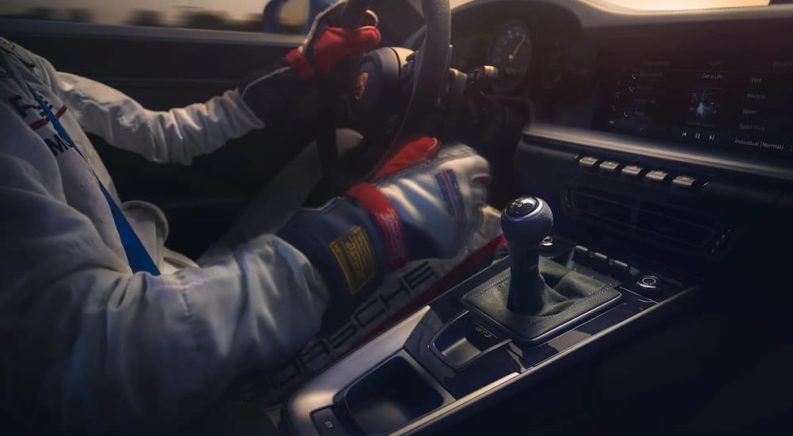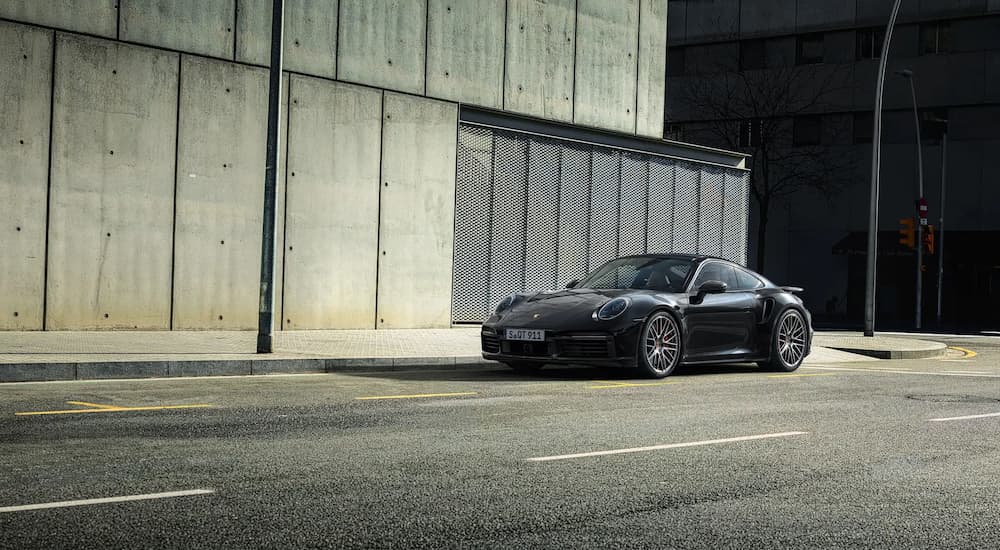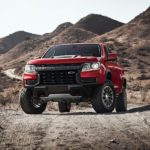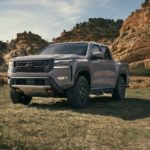It is likely that in any objective analysis of which individual nameplates constitute the greatest automobiles of all time, the Porsche 911 would be at the top of the list. It has it all––one of the world’s best performance pedigrees, daily livability, longevity, value, and timeless style. While other vehicles have done better as cash cows, beauty queens, or track kings, nothing really balances the three like the 911 has for nearly 60 years.
Even before I started writing about cars, I knew that the 911 was the Porsche flagship and the quintessential German sports car. I knew it had a huge fanbase, a complicated lineup, and an unmistakable design. But I didn’t really understand what made it so special to the automotive world, which is why we’re here now. I’ve started by telling you that the Porsche 911 is likely the greatest car in the world, period; now, let me try to explain why that is.
The Everyday Sports Car
I’m going to start with what might be the 911’s most surprising quality: its usability as a daily driver. What I, the young car fanatic, did not realize back in the day of the Murcielago and Enzo was that driving these types of cars is terrifying. The challenges of ingress and egress with a classic wedge-shaped supercar are well-documented by the meme machine of the internet. Parallel parking a vehicle with no rear window or navigating a parking lot while you’re basically sitting on the ground with the world’s largest A and B pillars surrounding you is a constant “Jesus take the wheel” experience. Heavy clutch pedals, finicky gearboxes, and engines which reach “high mileage” before they hit five figures all contribute to making the supercar experience a daunting one.
That’s not to mention that the suspension on track cars is usually so stiff that the dampers might as well be solid titanium rods. But none of this is so for the 911! With every generation of the 911, the engineers at Porsche have done the best they could with the technology available to perfectly balance the damping so that regular road bumps can be tolerated without giving anything up on the track. They may have perfected the manual transmission, with a clutch and gearbox so easy to use that some dare to say, “I wish everybody could learn stick on a 911.” An upright body style offers reasonable outward visibility in all directions and won’t require you to buy a crane to help lower yourself in––and it even has rear seats!
Everybody who drives a 911 is compelled to observe that the ride quality is livable, despite nigh-unparalleled handling at all speeds, because this balance is so rarely achieved in a sports car. Of course, ride comfort doesn’t count for much if the engine’s going to fall apart after 50,000 miles, but a Porsche’s won’t. The millionth 911 rolled off the line in 2017, and Porsche claims 70% of its cars are still on the road today! At the time of writing, there are 73 of these things for sale on CARFAX with 6-figure mileage in the US alone. Porsche even offers the best CPO program in the business, providing pre-owned models up to 13 years old with factory warranties to back their reputation as one of the highest-quality brands on Earth.
The 911 offers an incredibly rare balance of genuine quality and road manners with true sportiness. Anything less could hardly call itself a Porsche––anything more is surely another 911.
Party in the Back
Confession time: I was living through social distancing before I fully understood the definition of a mid-engine layout. Some of you are appalled, and some of you will be as enlightened as I was to learn that it means a layout with the engine in between the front and rear axles. It just so happens most vehicles that choose this layout––or at least, choose to flaunt it––tend to put the engine behind the driver. However, there are actually many front mid-engine vehicles: the Dodge Viper, Honda S2000, and similar long-nose sports cars, as well as the Hummer H1 for your daily dose of trivia. The association between “mid-engine” and “behind the driver” is so strong that the C8 Corvette is widely regarded as the first “mid-engine” Corvette––despite the C2 through C7 generations using front mid-engine layouts!
Back to the 911. This misconception of mine meant that I did not comprehend what it means that the 911 is, and always has been, a rear-engine car. That means the legendary lineage of flat-6 engines has always resided behind the rear axle. This presents the same advantages of front-engine FWD designs––a flat cabin floor, a larger cabin overall, and improved traction for the driven wheels thanks to the weight distribution––but with the far more entertaining RWD propulsion style!
There is one drawback, though. While FWD cars are notorious for “understeering” (when the inertia of the engine overwhelms tire traction and the car makes a wider turn than it should), a RWD drivetrain is notorious for the opposite effect, “oversteer.” This is compounded significantly by placing the engine––the heaviest part of the car––behind the rear axle. Oversteer is basically drifting, but the term tends to imply that it’s happening by accident.
This is spooky for the average driver and doubly dangerous for it. The natural response to understeer is to let off the throttle and hit the brakes, which will help correct the problem; doing this during oversteer will only make the problem worse and is likely to result in an accident. However, Porsche has engineered the 911 so effectively that drivers of modern examples need not fear that this could happen to them unintentionally. Many new 911s operate with AWD, and the steering and suspension controls are advanced enough that unexpected oversteer is highly unlikely. However, any driver who wants to experience the thrill and the challenge of wrangling the rear-engine 911 can do so at will, thanks to what is inherently one of the most exciting automotive configurations possible.
Timeless Heritage
When a person loves something, that thing is worth more than the sum of its parts. In this scenario, background and history matter. The extended versions of the Lord of the Rings movies are loaded with details that are meaningless to casual observers, but the significance of the three golden hairs gifted to Gimli by Galadriel is enough to bring any seasoned fan (myself included) to tears. The Porsche 911 is one such entity, commanding the passionate adoration of its fans and ensuring that every detail means something.
The strength of a community transforms an ordinary thing (like a car) into an extraordinary experience. The 911 community is proud of the iconic silhouette and styling features that remain largely unchanged after 60 years of production. They love the mechanical sound and feel of the naturally aspirated air-cooled flat-6 engines of the earlier generations and appreciate the enormous leaps of engineering that have brought the 911 to where it is today without giving up the livability or fun factor that is so quintessential to its design. The design progression from your grandfather’s 911 in the 1960s to your new 911 today is obvious and consistent, something that can’t be said for nostalgia-thirsty models like the Acura NSX or Mustang Mach-E. Even the 996 generation, widely disdained for using a water-cooled engine and fried-egg headlights, is no outlier––a water-cooled engine was a necessary upgrade to continue the march to better performance, and the non-traditional headlights came from Porsche’s Le Mans-winning GT1 race car!
Speaking of which, if you’re a racing fan, you already know that Porsche has an extensive history of success. What I find most amazing about the 911’s racing heritage––which changes nothing about the car itself but just makes it worth more to those who care––is that it isn’t limited to track racing. Yes, the Le Mans wins and GT championship victories are there, but so are hill climbs and rallies! The 959 in particular––an extremely rare and special car based on the 911 and built to challenge the Ferrari F40––won the Paris-Dakar Rally in 1984 and 1986! It was also the fastest street-legal production car in the world at the time and incredibly technologically advanced for the day, pushing the boundaries as any performance-focused 911 should.
The 911’s pedigree speaks for itself to racing enthusiasts, and Porsche’s consistency adds value to the 911 for anyone who can put a price on nostalgia. The outcome is a lineage that is almost guaranteed to appreciate in value over time, both to owners who are making Porsche memories and shoppers looking to do the same.
Numbers, Because Names are Too Easy
The most frustrating thing about the 911 is the naming convention. None of it makes any sense! Well, it makes sense; it’s just non-intuitive to a newbie. Here’s the part of the blog that looks like an engineering textbook while I break down the comically complex nomenclature of the Porsche 911.
Many vehicles are known among enthusiasts by their internal identification numbers. At its simplest, this style of nomenclature gives us the Mk 1 – Mk 8 Golf GTI or the C1 – C8 Corvette. Most German cars, however, seem to be known by completely random and non-sequential IDs. The BMW 3-series is probably the most well-known for names like E36, E46, and E92.
The Porsche 911 falls under this same spell of confusion. The following numbers all mean “911” but refer to their generation and production years, in chronological order: 901, 911, 912, 930, 964, 993, 996, 997, 991, and 992. It reads like a stock exchange, I know––they couldn’t even make them go in ascending order!
Some noteworthy trivia regarding these 911s:
- 901 was the original name of Porsche’s 2+2 sports car, but Peugeot threatened to sue for infringement on their copyright of all “X0X” format automobile names. Porsche changed the name to 911.
- 912 was the only 4-cylinder 911, if you wanted to go slow.
- 930 was the first turbocharged 911 (and one of the first turbocharged production cars in general), if you wanted to go fast and/or die––it was nicknamed “the widowmaker” for a reason!
- 993 is the last “analog” 911 before the retirement of the air-cooled engine.
- 992 is the current 911 generation, which was introduced in 2019.
Got that memorized? Good, you’ll need it. The next thing to add to your 911 crib sheet is the trim or model identifiers. There’s a strong argument to be made that the 911 offers more configurations than an F-150 pickup truck! Porsche trim names aren’t always intuitive (example: the all-electric Taycan Turbo), but they tell you everything you need to know about its DNA if you know the code.
Level 1: 911 Trims
- Carrera: An entry-level 911 is named for the Carrera Panamericana races that Porsche was winning in the 1950s.
- Turbo: The lineage of the 930 is always a cut above the Carrera in terms of performance. The name came from the 930’s use of a turbocharger, which set it apart at the time. Now even the Carrera is turbocharged, but Turbo trims still represent a major performance upgrade.
- GT3: Created to meet homologation requirements for the GT3 class of racing, this track-oriented 911 gives up a degree of comfort for performance and is the only naturally aspirated member of the 992 lineup.
- GT2: A class above GT3, sacrificing even more livability for supercar-level performance. A GT2 has not yet been announced for the 992 generation.
Level 2: 911 Trim Classes
- Cabriolet: The convertible! This body style is applicable to any 911 Carrera or Turbo.
- Targa: Technically a body style but treated as a trim, the Targa was invented to pre-empt legislation that would have banned traditional convertibles in the USA. It’s been a staple of the 911 lineup ever since.
- 4: Signifies an AWD powertrain. Standard on Targa models. Stealthily standard on Turbo models, which are all AWD but don’t carry a 4 badge (I guess “Turbo” is German for 4).
- S: For speed. Okay, maybe it doesn’t actually mean that, but it does indicate a higher-power version of whatever model the S is attached to, which could be anything below the GT3.
- GTS: An S-car with extra features, sharper looks, and even more power for a truly grand touring experience. Available on Targa and Carrera models; the lazily-named “GT3 with Touring Package” follows the same concept.
- RS: Modern “RennSport” models are tweaked for performance, usually via weight reduction and bigger brakes. No 992 RS models are available as of the time of writing, but it’s expected that a 992 GT2 will be announced and will only be offered as an RS.
Some actual examples of these rules applied in today’s lineup give us names ranging from the simple 911 Carrera and 911 Turbo to the complicated 911 Carrera 4 GTS Cabriolet and 911 GT3 with Touring Package. The result is a staggering 21 models plus a Targa special edition celebrating the 50th anniversary of Porsche Design; hopefully, having slogged through all that, you’ll know exactly what the deal is with whatever 911 you come across on the road!
The Ingredients of a Legend
It’s all there! A ride comfortable enough for daily use, with the reliability to endure it and the sportiness to enjoy it. A heritage that gives meaning to every angle, sound, and feature, feeding a community as tightly-knit as any in the industry. And plenty of lingo that requires a certain degree of passion to interpret it! It seems like these are the pillars of design––maybe not the features themselves, but the outcomes created by adding them all together and refining them to the maximum degree––which have always made the 911 so revered by enthusiasts.
In case I’m still missing something, though, I’ve got plenty of time to figure it out before I’ve saved up enough to buy one. For now, I’ll continue to stare in awe and enjoy every second in one’s presence.






